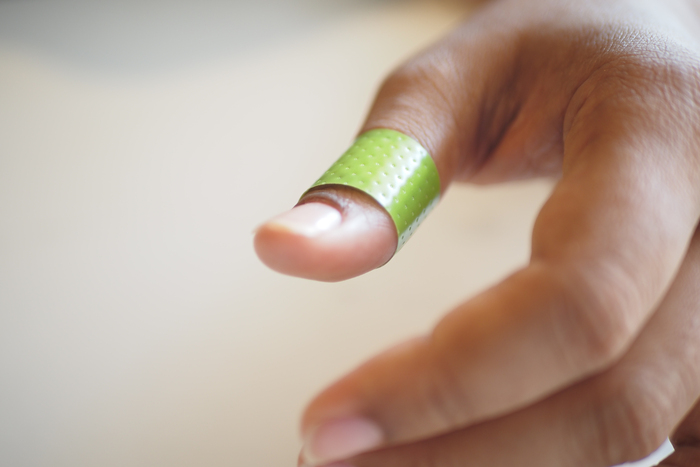Key points
- The severity of a finger cut dictates whether medical attention is necessary, with serious injuries potentially requiring emergency care.
- Indicators for professional evaluation include deep, long wounds, exposed bone, uncontrolled bleeding, nerve or tendon damage, suspected broken bone, or embedded dirt/objects.
- Minor finger injuries can be managed at home with appropriate first aid, including cleaning, applying pressure, and using ointments and bandages.
- Deep cuts require professional evaluation and treatment, which may include cleaning, stitches, tetanus shots, imaging studies, or antibiotics.
- The article also provides aftercare tips to encourage healing and prevent infection after treating a cut finger.

When Should You Seek Urgent Care?
Knowing when to seek urgent care for a cut finger is essential for proper treatment and recovery, according to the ASSH. They note that while many minor cuts can be managed at home, certain situations warrant immediate medical attention to prevent complications such as infection or improper healing.
Here are some key indicators that a cut requires professional evaluation, according to the American Academy of Dermatology (AAD):
-
A wound more than three-quarters of an inch in length
-
A wound more than a quarter of an inch deep
-
An injury that exposes the bone
-
Bleeding that does not stop, even after compressing and elevating the injured finger
-
A wound that affects the nerves, joints, or tendons
-
A suspected broken bone
-
If dirt or foreign objects are embedded into the wound
Recognizing these signs can help ensure that you receive the appropriate care in a timely manner.
First Aid for a Cut Finger
Most finger injuries are minor enough to take care of at home. However, serious finger injuries like a severed finger should be evaluated by medical professionals in the emergency room as soon as possible. For minor finger injuries administering first aid for a cut finger is crucial to promote healing and minimize the risk of infection, according to the AAD. Proper care can make a significant difference in recovery time and overall outcomes.
Here are some essential tips to effectively treat a cut finger at home, as outlined by the AAD:
- Apply pressure directly to the cut until the bleeding stops. You should use a clean cloth to apply pressure until the bleeding stops.
-
Clean the affected area quickly with soap and water to remove dirt and bacteria.
-
Apply petroleum jelly or sterile antibiotic ointment to moisten the wound and help promote healing.
-
Cover the injured finger with a bandage or dressing to slow bleeding and prevent infection.
-
Elevate the hand to reduce inflammation and swelling.
-
Take over-the-counter (OTC) pain relievers to help reduce swelling and alleviate pain until your cut heals.
Following these steps can help ensure that your finger heals properly while providing comfort during the recovery process.
What Should You Do if the Cut Is Deep?
Deep cuts can result from various incidents, and their severity will dictate the appropriate course of action, according to the AAD. If you suspect that a cut is deep, it’s important to seek professional medical evaluation, as these injuries can involve damage to underlying tissues, nerves, or blood vessels.
Medical treatment for a deeper cut typically begins with a thorough examination by a healthcare professional, according to the AAD. They go on to explain that depending on the severity of the wound, treatment may include cleaning the area more extensively to remove debris and bacteria, followed by the application of stitches or staples to close the wound and promote healing.
In some cases, a doctor may also administer a tetanus shot if the injury is particularly dirty or if the patient’s vaccination status is not up to date. Additionally, deeper cuts may require more advanced care, such as imaging studies to assess for any underlying damage or the use of antibiotics to prevent infection. Ultimately, the specific treatment plan will vary based on the cut's depth, location, and the overall health of the individual.
How Long Will a Finger Cut Take to Heal?
Minor wounds, such as small abrasions or shallow cuts, typically heal within one week with appropriate treatment, according to the ASSH. However, they note that larger cuts or those that require stitches may take significantly longer to recover fully, sometimes extending to several weeks or even up to a year in more severe cases. Factors such as the individual's overall health, age, and the care provided during the healing process can all influence recovery time.
To promote optimal healing and prevent infection, it’s important to follow specific aftercare guidelines, according to the ASSH. This includes consistent and careful management of the wound that can make a significant difference in the healing process.
Here are some essential aftercare tips to help your cut heal effectively, as outlined by the ASSH:
-
Rinse the cut with clean, sterile water and a gentle soap once per day or each time you change bandages.
-
Inspect your wound carefully for signs of infection each time you change the bandage.
-
After rinsing the cut, gently pat it dry with a clean cloth.
-
Apply a thin layer of antibiotic ointment to the cut.
-
Wrap the cut in an adhesive bandage, ensuring it is not too tight or too loose. The bandage should not be painful or cut off circulation, and it should completely cover the wound to prevent air exposure.
-
Keep the healing cut dry and covered, especially while showering, to protect it from moisture and potential contaminants.
By following these guidelines, you can help ensure a smoother healing process and reduce the risk of complications.
Urgent Care Near Me
If you find yourself dealing with a cut or laceration that requires medical attention, look no further than SolvHealth to help you find an urgent care facility near you. With a user-friendly platform, SolvHealth allows you to quickly locate nearby urgent care centers, check their availability, and even book appointments in advance. This convenience ensures that you receive the timely care you need to properly treat your wound and promote healing. Don’t hesitate—take control of your health and find the right care for your injury today with SolvHealth!
FAQs
When should I seek medical attention for a cut finger?
Seek medical attention for wounds longer than three-quarters of an inch, deeper than a quarter of an inch, exposing bone, causing uncontrolled bleeding, affecting nerves or tendons, with suspected broken bone, or with embedded dirt or objects.
How can I treat a minor cut finger at home?
Apply pressure to stop bleeding, clean the area with soap and water, apply petroleum jelly or sterile antibiotic ointment, cover with a bandage, elevate the hand, and take over-the-counter pain relievers.
What should I do if the cut on my finger is deep?
Deep cuts should be evaluated by a healthcare professional. Treatment may include cleaning, stitches, tetanus shots, imaging studies, or antibiotics, depending on the severity.
How long does it take for a cut finger to heal?
Minor wounds typically heal within a week, while larger cuts or those requiring stitches may take several weeks or up to a year. Factors such as overall health, age, and care during healing can influence recovery time.
What are some aftercare tips for a healing cut finger?
Rinse the cut with clean water and soap daily or when changing bandages, inspect for signs of infection, pat dry, apply antibiotic ointment, wrap in an adhesive bandage, and keep the healing cut dry and covered.
Can over-the-counter pain relievers help with a cut finger?
Yes, over-the-counter pain relievers can help manage pain from a minor cut finger.
What do I do if there's a foreign object embedded in the cut?
If there's a foreign object embedded in the cut, it's best to seek professional medical help to avoid further injury or infection.
How can I prevent infection in a cut finger?
To prevent infection, keep the wound clean, apply antibiotic ointment, and change the bandage regularly. If signs of infection appear, such as redness, swelling, or pus, seek medical attention.

